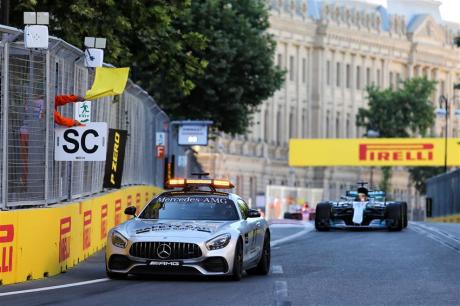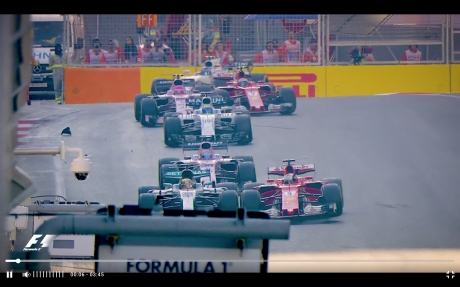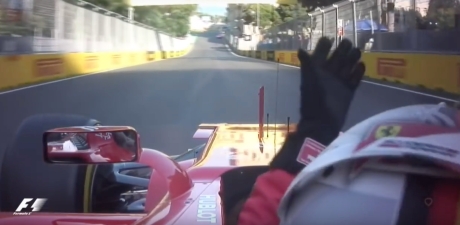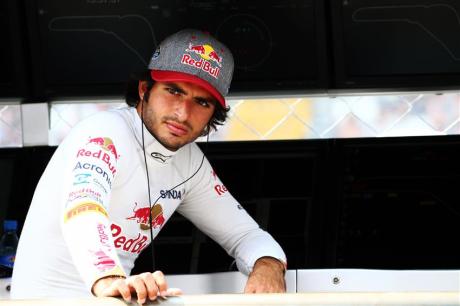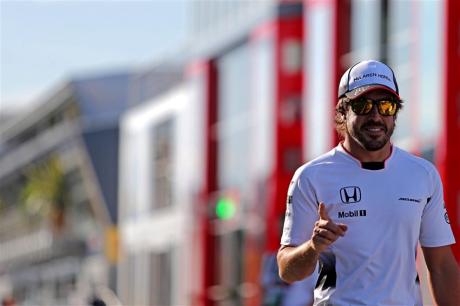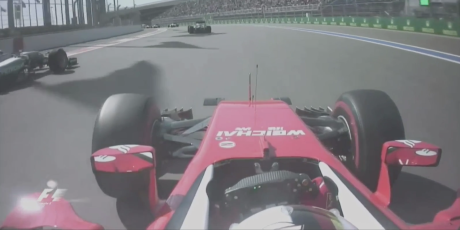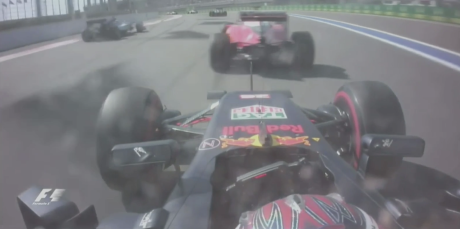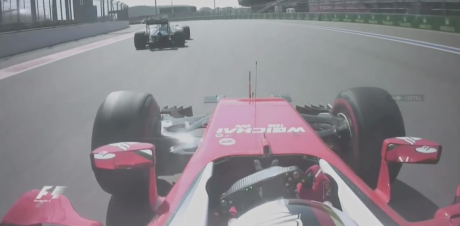
Twenty Five years ago today, Oasis released their seminal debut album Definitely Maybe. Over the next decade and a half, through various incarnations and following several bust ups, the band finally disbanded for good. Over their career they wrote, recorded and released around 150 songs, amongst them tunes which for many would come to define their generation.
To celebrate a quarter of a century since arguably my favourite band of all time released their first LP, I thought I’d collate my own list of the 25 songs of theirs that mean the most and that resonate the loudest with me. I’ve put the whole thing up as a playlist on Spotify. It’s not intended to be a definitive list. Such a thing, I’d argue, is impossible to create as music is entirely subjective. It’s just a personal collection of songs that I love by a band that I idolised.
Some might say there are some glaring omissions, but don’t look back in anger. It’s just a bit of fun.
25. Fuckin’ In The Bushes – Not so much a song as a tune but it was at the time of its release and remains today an absolute belter. The band never actually played it live, but did use it as their hype and walk on tune for years. And with good reason. Its driving beat and thumping riff stirred your rocking soul and announced the (re)arrival of the band. Mark II.
Standing on the Shoulder of Giants received a mixed reception but remains one of, if not my favourite Oasis album. There’s so much of interest as Noel, freed in many ways after the first three albums and the post euphoria comedown (literal, musical and metaphorical) from the excesses of Be Here Now, lets himself loose. Creation Records was gone and so was Alan McGee. Guigsy and Bonehead had left. The band was basically just Noel, Liam and Alan White on drums. Gone too was Owen Morris as producer, replaced by Spike Stent.
What you have, then, is Noel essentially writing what he wanted in his own timeframe. Released as the first album on Big Brother records, it was a message of intent from the Gallaghers, too. They weren’t going anywhere, and they were going to adapt to the changing musical landscape and grow with it, and their audience.
Interestingly, its inclusion on the album saw it being banned from sale in Walmart across the USA.
24. D’You Know What I Mean? – Be Here Now has become roundly seen as the nadir of the Oasis back catalogue, thanks in large part to Noel’s own later-years sober disgust and dismay at his third offering as songwriter.
I remember its release only too well, queueing outside Our Price in Fleet waiting for it to open early so I could be one of the 424,000 people to get my hands on the album on day one. I was 16. And I loved it.
The album reflected everything of the time. It was big and loud. It was lurid and braggadocious. It was also, not to put too fine a point in it, a bit of a mess. But it was unmistakably Oasis. The recording sessions reportedly swung between wild drug binges and ferocious arguments, but despite all of that what has perhaps been lost in the intervening 22 years of fashionably abject negativity is that it includes some fantastic songs.
Is this one of them? Arguably not. For one, it’s lazy as hell. It is Wonderwall on electric guitars. Check the chord sequences. They’re identical. It’s simply a rehash of what made (What’s the Story) Morning Glory so good, layered with a million guitar overdubs and some special effects. If you want to know the bonkers levels the band went to in the minutiae of the layers on this album, the morse code in this song spells “bugger all,” “pork pies” and “strawberry fields.”
But at the time, it had me hooked. The video aped Stanley Kubrick’s Full Metal Jacket. It was even filmed at Beckton Gas Works, where Kubrick had recreated the Vietnamese city of Hue and filmed the final scenes of the movie. Liam’s snarling vocal was a call to arms for anyone left of our generation that wasn’t already a signed up member of his swaggering clam of wannabes. Did we know what he meant? Probably not. Did it matter? Not one bit. Was it a great song? No. But who cared. It rocked.
23. Stop Crying Your Heart Out – With a full-time line-up that now included Gem Archer (Heavy Stereo) and Andy Bell (Ride), for their fifth album the band now had three acknowledged songwriters. Much was expected of their first album together as the band found what would become arguably its most technically and professionally proficient line-up (my personal favourite line-up only came with the arrival of Zak Starkey on drums.) Division still existed however, as drummer Alan White would leave soon after the album’s release.
Their first album together, Heathen Chemistry, always fell flat for me, but in hindsight is a far more complete offering than its follow up Don’t Believe The Truth. HC was disjointed and lacked the cohesion of the first four offerings, perhaps because Noel was now having to share songwriting duties and the process was having to become more democratic.
That said, there are some stand out moments and this is one of them. The line “All of the stars have faded away,” called to a culture in which our childhood heroes were tripping up in front of us and falling from the pedestals on which we’d placed them. The band included.
As England crashed out of yet another football tournament, this was the song that accompanied their defeat. The party was most definitely over.
22. Who Feels Love? – Reversed guitar loops, a hypnotic almost dirge of a melody, tabla percussion and pseudo mystical lyrics, this was an interesting choice for the second single from SOTSOG but it’s stood the test of time well. Sure, it’s a bit of a George Harrison homage, but its one of the band’s most intriguing moments as it attempted to rediscover its purpose and direction.
21. I’m Outta Time – Although Liam’s first songwriting attempt (the actually very sweet Little James from SOTSOG) had been ridiculed, he quickly grew into the role. Heathen Chemistry saw three of Liam’s songs make the cut, including the searing “Born on a Different Cloud.” He got three onto DBTT, as well, with “Guess God Thinks I’m Abel,” a personal standout. But it was on the band’s final album, the much maligned but I personally find excellent Dig Out Your Soul, that he really hit his stride. The special edition featured a massive five songs by the younger Gallagher sibling, and this is his masterpiece.
While many simply tried to downplay it as a cheap imitation of John Lennon’s Jealous Guy (not at all helped by the Lennon voice sample at the song’s close), it’s in this song that Liam shows for perhaps the first time the genuine prowess he possesses as a songwriter, an under-appreciated skill that would only come to the fore in his solo work over the past few years.
It’s a fantastic song and a gorgeous ballad that not only merits its place on the album but marks it out as one of the finest songs on the record.
20. Let There Be Love – While many of Oasis’ songs feature a combination of Noel and Liam on lead and backing vocals, there are precious few that feature both in lead roles. This was only the fifth time the duo would share lead duties, and it came on the band’s penultimate and ultimately most disappointing album, Don’t Believe The Truth.
There’s already a sense of foreboding in the song’s lyrics, and with the music video featuring black and white slow motion footage of the band playing live, it already started to feel perhaps not quite like a farewell, but perhaps the beginning of the end.
19. Flashbax – The B Side to “All Around The World,” Flashbax always intrigued me as a single. Its relatively stripped down nature in the midst of the cacophony of the multi layered fog of Be Here Now immediately made it stand out. It was a hark back to the B Sides of the first two albums and I’ve always absolutely loved it. Frustratingly, it also holds up a mirror to what Be Here Now could have been, had it not seen many of its greatest moments lost under the weight of excess.
18. (It’s Good) To Be Free – One of the B Sides written for Definitely Maybe, the song featured as a B Side to the non-album track “Whatever.” It perhaps didn’t come to widespread attention until it was included on the band’s B Side album “The Masterplan” in 1998, but when it did fans were immediately drawn to its rawness and the still youthful fragility of Liam’s voice, long before the drawling rasp for which it became known and which was later much missed when he cleaned his act up a bit. In a sea of outstanding B Sides, this one always stood out to me.
17. Rock ’n’ Roll Star – I remember the first time someone put on Definitely Maybe. That bent first note, the build and expectation and then the whallop straight into the future. For a kid in No Fear pants and a baggy jumper listening to Nirvana and Pearl Jam, this was altogether something different. Everything about this song spoke of what it was to be reaching for a dream, especially one that people said you’d never achieve. It was two fingers up at anyone who ever told you that you couldn’t do something. The bravado, the confidence, the joy and the positivity. In that moment we all became rock n roll stars. We were all part of the band. This was our journey now, too.
16. Cast No Shadow – To me this has always been one of Noel’s simplest and most glorious moments of songwriting. He would later admit that the piece was written about Verve singer Richard Ashcroft who, so Gallagher thought, never looked very happy despite his incredible talent. Thus the staggering line, “bound with all the weight of all the words he tried to say.” Like a lot of songs on WTSMG, it’s beautifully produced and features a string section that Gallagher had become so taken with after recording Whatever. Stands the test of time as one of his best.
15. Fade In-Out – This song is, I believe, the only Oasis song to feature guitars in drop D tuning, giving it the grungy, almost country sound. The full Western influence comes to the fore with the slide guitar, played surprisingly deftly by Johnny Depp. Depp and Noel had first met during the recording of the Warchild HELP EP, and became reacquainted on the island of Mustique where Gallagher had taken himself away to write and record the demos that would become Be Here Now. While a lot of people find it a hard listen, for me it’s always been one of the few parts of BHN that made sense. The chaos and the screaming. It’s almost a primal. Part of me wanted to put this in the top 10. It’s just a belting rock and roll track.
14. Whatever – If you live in America, chances are this appears on your copy of Definitely Maybe. If you’re from the UK, the chances are it definitely does not. “Whatever” was released in the UK as a winter / Christmas single and filled the gap between the band’s first two albums. It was a song that the band didn’t initially believe Gallagher had written as they all thought it was too good. Ultimately it turned out to be, as Neil Innes (Monty Python, The Rutles etc) successfully sued them for nicking part of his 1973 song “How Sweet to Be an Idiot.” As a result he now receives royalties and a co-writing credit, much as Lennon and McCartney do for much of the music he wrote for The Rutles. At the time this song was the highest entry into the UK single chart for the band, but it was more important than simply reflecting their new levels of notoriety and popularity.
With a big budget, orchestra and sumptuous production, it was a sign that the garage band was moving on. They weren’t pretending to be in a pop band anymore. They’d made it.
13. The Shock of the Lightning – This is going to seem a bit controversial so if you’re upset by this, well, do your own list. Because I utterly adore this song. There’s an urgency to it, an importance. As the lead single to what would be their final album, it was also a time machine back to the earliest days of the band. Here again was the rawness, the intensity and the passion, with lyrics almost spat down the mic by the greatest front man of his generation.
If it sounds a little rough, that’s because it is. Noel came up with the idea and ran into the studio one night. He played the drums, bass and guitar. Laid the tracks down. And that was it. The demo is essentially the final song.
Accompanied by a psychedelic video of the bands musical and life influences, there’s even Liam singing Champagne Supernova backwards at the end. It’s a belter and I won’t hear otherwise.
12. Stop The Clocks – If the inclusion of the last song is controversial then this one will be even more so. Stop The Clocks was originally written by Noel in 2001 and was recorded for Don’t Believe the Truth in 2004. For some inexplicable reason, it never made the album. Never even made it out as a B Side. Was Noel perhaps saving it for himself? We’ll never know.
All we do know is that when Oasis released their greatest hits and announced it would carry the name of this mythical song which Noel had sung in sound checks at gigs for years, fans believed they’d finally get to hear a studio version. But when the album dropped the song was missing.
When Oasis disbanded, any hope of the song seeing the light of day short of studio session bootlegs seemed lost. Until Noel sat down and recorded it with his High Flying Birds. Interestingly, he’s never played it live with his new band. So, for me, it remains an Oasis song.
It’s a beautifully crafted song, written around the time the band were recording Stop Crying Your Heart Out and the melancholy is self evident. Lyrically it isn’t far off The Masterplan in its introspective nature, but musically it’s one of the most complex and soulful songs Noel ever wrote for the band.
11. The Masterplan – For many this isn’t simply the best B Side the band ever recorded, it’s the best song. Period. Written by Noel in a Japanese hotel room, it’s all about the path our lives take and how ultimately “all we know is that we don’t know how it’s gonna be.”
Hidden as the fourth song on the Wonderwall single, it became an immediate fan favourite helped in no small part by Noel’s stunning version recorded for the MTV Unplugged series in August 1996. It’s one of those songs that is inescapably Noel, and which one couldn’t imagine with Liam on vocals. For a long time, it was heralded as the reason the band needed to release a B Sides album, and so when they did finally succumb to the pressure of doing so, they duly named the collection after the song.
It’s a tremendous work but for me I’ve always been hugely frustrated with its production. Noel’s vocal levels were recorded way too hot and they clip. If you listen closely you can hear it from the very first word as the hard T of “Take the Time” and the esses of “Some Sense” and “Say” distort. Most annoying is “Looking-glass” where the esses are so distorted it sounds as though he’s lisping. Without that, it’s Top 10. Maybe even Top 5. But that’s always, always frustrated the hell out of me. So it doesn’t make the final ten.
10. Talk Tonight – There’s a fascinating story behind this song that revolves around Noel Gallagher quitting the band on their US tour in 1994 and disappearing off to Vegas after an awful show in LA where they’d all reportedly been off their nuts on meth. While in Vegas he met a woman in a bar and talked all night about the Beatles, their joint love of the same music reminding him why he’d starting writing songs in the first place and sending him back to the band.
To me, it’s by far one of Gallagher’s most perfect ballads. It’s sweet yet sincere and if the story checks out then it’s almost entirely biographical.
Musically it’s what you’d expect from Gallagher around this time, the chord shapes and progressions aping Wonderwall, Whatever and Cast No Shadow, yet in his inimitable and unmistakable style, he’s able to pass it off somehow as fresh and new. Oh, and having Paul Weller on it didn’t hurt either.
It’s not just one of my favourite Oasis songs, but one of my favourite songs ever written. And if I’m ever at an open mic night, it’s the only song I can pick up a guitar, play and sing with any semblance of confidence.
9. Columbia – This was the first song Noel Gallagher wrote with Oasis. It was the first song they ever played together live. And it went down like a sack of shit. The band couldn’t believe it. But in hindsight, you can see how it might have dropped like the proverbial lead weight. Manchester was still Stone Roses territory in the early 90s. Certainly in the venues the likes of Oasis were playing. Yet the Hacienda was also at its height and so dance music was everywhere and bands like Primal Scream were highlighting a completely different path of dance based rock with Screamadelica.
At the start, Columbia was just a jam. A six minute groove of a driving up-tempo, back beat… almost dance beat. Noel’s simple riff loops over and over. For punters more used to baggy indie, this wasn’t normal. One night, high on acid, the guys wrote some lyrics. And created an anthem.
It’s as thumping a tune today as it was when they first played it almost 30 years ago. At the band’s gigs it was a staple, from their first to their last days. In many ways it forged the path from what had been and what was the scene in the early 90s to where Oasis was taking indie and rock music into the mid 90s. It’s just mega.
8. Wonderwall – Is it our generation’s Stairway to Heaven? If there’s one song likely to get you kicked out of a guitar shop, it’s this. Hit that first E minor chord and you’re gone. Yet it remains for many the first song they’ll ever learn on guitar and the one classic everyone and anyone can pull out of the arsenal around a camp fire. And everyone knows every word.
The song takes its cue from George Harrison’s Wonderwall Music in 1968, but other than that, there’s not much more to tell. Everyone knows it upside down and inside out. Oh, there is one interesting fact – the cello isn’t a cello. It a melotron, played backwards.
What’s perhaps most fascinating about this song is how its legacy has seen so many different versions crop up. Before it had barely entered the charts there was the 60s inspired Mike Flowers’ Pops version, but perhaps the most important of all covers was that recorded by Ryan Adams for his 2004 album Love is Hell. He put a much more sombre tone to the song, taking the view that the vocal could just as easily have been sung by someone contemplating suicide.
His take on the song so changed the tone and feeling of Wonderwall, that Noel Gallagher now plays Adams’ version at his live gigs.
7. Acquiesce – Unquestionably one of the band’s greatest B Sides, Acquiesce was so strong that it almost made the cut for (Whats The Story) Morning Glory, only to be relegated at the last moment. Alan McGee wanted it to be a double A Side with Some Might Say but after an argument with Noel Gallagher it fell to being just a B Side.
It immediately became a fan favourite and was belted out for years at gigs by both Gallagher bothers, this song forming one of very few in which both take centre stage. Noel had to take the vocal in the chorus as, apparently, Liam couldn’t hit the high notes.
Personally, it’s always been a favourite. Not least because the first time I ever went to watch Oasis live, on the Be Here Now tour, my friends and I were jumping up and down and going so nuts in the seated section next to the side of the stage that Liam dedicated it to us as the encore. We were 17 and, needless to say, completely lost it.
6. Live Forever – 1994 had been a pretty shit year. Ayrton Senna had been killed. Kurt Cobain had blown his brains out. As a 13 year old I loved racing and music and so these two events naturally felt borderline cataclysmic. As a stroppy teenager Nirvana’s music appealed. Of course it did. All nihilism and hatred of anything and anyone telling you what to do. We could look at our feet and shuffle along telling anyone who would listen how unfair it all was. When Cobain sang “I hate myself and want to die,” we concurred in barely registrable mumbles.
When Oasis came along it was like a blast of sunshine through the clouds. And this… this was the anthem of the new way. “You and I are gonna live forever!”
That unconfined joy is still evident in every breath of the song. It’s just so unashamedly optimistic that even on the most overcast of days it can’t help but lift your soul.
It was a cornerstone of one of the finest debut albums in rock history and created the foundations upon which the bombast of Oasis was built. Here were these guys, a bunch of scallies from Manchester who’d not had two pennies to rub together, telling us we could all be rock n roll stars and we were going to live forever.
It was the beginning of one the most life affirming periods of my life I’ve ever known.
5. Supersonic – If you’re going to be a rockstar, you’d better have something important to say. And with Supersonic, snarling down the camera from the top of a derelict building, Liam Gallagher laid out his stall with the very first words he ever uttered to the world.
“I need to be myself, I can’t be no-one else.”
I challenge you to find a better opening line for any frontman in rock n roll history.
As debut singles go, there have been few as brash. It was bare faced, arrogant, swaggering confidence. It was the best bits of everything guitar-based British music had been suggesting for the past few years yet it was completely new. It was working class guts and devil may care attitude. All served up with a heavy dose of “fuck you.” It was everything that a post Thatcherite Britain needed.
Teenager, adult, on the dole or on the way up, it didn’t matter. Britain had a new voice.
4. Let’s All Make Believe – Another B Side and another entry from the SOTSOG period, this song is one of the least known yet one of the most beautifully written and performed songs in the entire Oasis catalogue. Whether the lyric is about Noel and Liam’s relationship, or that of two quarrelling lovers, it contains some of the most meaningful and, some might say, profound words the band ever penned.
The jangling guitars make for an uneasy bed, immediately placing the listener somewhat on edge, but it’s Liam’s powerful and purposeful vocal, delivering the searing words with apparently heartfelt emotion, allied to the accompanying strings, that combine to create one of Oasis’ most accomplished and beautiful songs.
If only for the line “strangle my hope and make me pray to a God I’ve never seen but who I’ve betrayed,” this deserves its billing among the very finest things the band ever created. Q Magazine thought it so good they put it at #1 on their list of the 500 greatest lost songs in history.
It’s utterly brilliant.
3. Champagne Supernova – If Live Forever became the post-grunge calling card of a generation finding ease with itself, then Morning Glory’s sign off became its anthem. In many ways, it was the come down before the comedown, the moment of calm in the midst of the storm. Champagne Supernova’s lyrics may not have meant anything to anyone who wasn’t immersed in the wave of Gallagher hysteria, but the song… the song was universal.
Search too deep for meaning in the lyrics and as so often you’ll come up with a bit of nonsense. The “Caught between the landslide” line was famously alleged to have come from the Alessi sugar jar that belonged to Noel’s then girlfriend and future wife Meg Matthews. The very title was supposed to have come from a mishearing of the Pixie’s album Bossanova.
What is clear with this song, however, is just how far the band had come in such a short space of time. Keep in mind this album was written, recorded and released in the year following their debut and yet so assured are they of their place and their importance within the industry that they were able to conjure up something that it took even the likes of the Beatles more than six albums to achieve in terms of its scale, gloriosity and composure.
Champagne Supernova works on many levels, too. It could form part of your heartfelt mixtape to a girlfriend whilst at the same time being the quintessential terrace chant or drunken pubcrawl singsong home. Like so many of Oasis’ best songs, the trick for that lies in its seeming simplicity and the seemingly effortless vocal, delivered in Liam’s now quintessentially accentuated guttural growl and elongated vowels.
I’ve always enjoyed the fact that the opening strum is actually the riff to the Sex Pistols’ Pretty Vacant, just played as a chord, and given how much of Gallagher’s songwriting at the time owed itself to either nods of the cap to influences, or straight up nicked concepts, chords and melodies, I’ve never believed this to be a coincidence.
Champagne Supernova remains one of the band’s most towering achievements and a song which still evokes memories of time and place whenever those first crashing waves are heard.
2. Slide Away – Noel once said that Slide Away was a conscious decision to try and write a song that combined The Smiths with Neil Young. It’s birth, however, may have been a touch more natural. Johnny Marr lent him the guitar on which he’d written “The Queen is Dead,” and that same night Noel wrote and fully formed the song we now know as “Slide Away.” In many ways, it was as if the song had always been in the guitar, just waiting to be let out.
So taken with the song were the execs at Creation that they wanted this to be the last single from Definitely Maybe, but with four singles already released from the album, Gallagher Sr insisted that five would be too many. It remained an album track.
Of all the songs on Definitely Maybe, it remains by far the most accomplished and the most rounded. Contrary to popular opinion, the album was not an easy one to record. It involved a huge number of different recording sessions and producers until it came to be formed into the cohesive unit we know now. And Slide Away is for me, without question, its defining moment. A bittersweet love song which remains, so it is believed, Sir Paul McCartney’s favourite Oasis song.
For a band with so much youthful exuberance and urgency, for a group of kids who wanted to take on the world and run it their way, in this song lay the shades of grey and the nuances that would permit them to go on to take over the world. Slide Away allowed more than just tone, it gave the band depth. And it remains, even after the now decades long falling out between brothers, Noel’s favourite vocal performance by Liam.
The moment that cemented this song as one of my all time favourite Oasis songs was hearing it on BBC Radio 1, Live from Knebworth. I couldn’t tell if Liam was singing “Take me there,” or “Take me back” but it didn’t matter. There was so much soul to his plea, so much heart in his desire to be heard that it buried itself deep inside me.
And it never got out.
1. Gas Panic – If Be Here Now was the ultimate reflection of the excess that the end of the 90s represented, then Standing on the Shoulder of Giants was the comedown. It was the moment of reflection for all of us, of realisation and of rebirth. It was a reflection of a time for us all to find our place in the world and to figure out, once and for all, what was going on with our lives. Where we wanted to go and who we wanted to be.
Gas Panic is Noel Gallagher’s very real comedown. In some interviews he’s put the content down to prescription drugs he was taking at the time. Some believe it’s more reflective of his elimination of the high quantities of narcotics that had become part of normal life from the moment the band hit the big time almost half a decade before. The panic attacks and crashing anxiety created by him giving up cocaine.
What’s clear is that never had he written a more personal song. Never had his words been so searingly visceral. So brutal. So meaningful. Never had they weaved so complex a web and so complete a story. Nor had they balanced so perfectly with a song that jarred so vastly against the norm for the band, yet at the same time seemed so born of their foundations in the relative nihilism of post punk, indie rock.
“What tongueless ghost of sin crept through my curtains?
Sailing on a sea of sweat on a stormy night
I think he don’t got a name but I can’t be certain
And in me he starts to confide
That my family don’t seem so familiar
And my enemies all know my name
And if you hear me tap on your window
You’d better get on your knees and pray
Panic is on the way.”
This isn’t your traditional Oasis singalong song. It’s not going to be belted out on the terraces. It isn’t going to be sung by students who only know how to play two songs around campfires or whacked on as the last dance at the school disco. This isn’t and was never supposed to be a universal song. And yet it is.
It became one of the band’s most popular and mighty live tracks. Perhaps because, by the early 2000s, we’d all had to grow up. We’d all had a taste of the real world. Because we’d all had to come down.
Perhaps because Standing on the Shoulder of Giants represented as much of a search for affirmation via discovery of self for the band who had helped us to define ourselves as our own search for truth had brought us to a point of reckoning in the same period, there’s an argument to be had that the songs from this album resonate with those of us of a certain age more than the others.
Or perhaps it’s just a perfectly crafted song. Written by one of the country’s greatest ever songwriters at a point of his most heightened expressive and emotional states. Freed from previous constraints and permitted to just write whatever and however he wanted.
I’ve been a fan of this band from the first note I heard them play. 25 years after they released their debut album they have released more than 150 songs into the world as a band and well over 200 if you include the solo records, other ventures and covers.
And yet, for me, this song tops them all.

